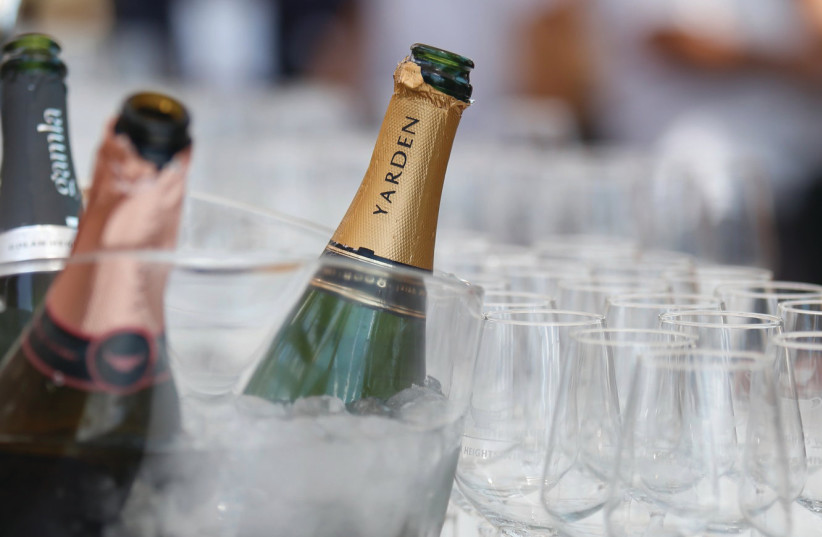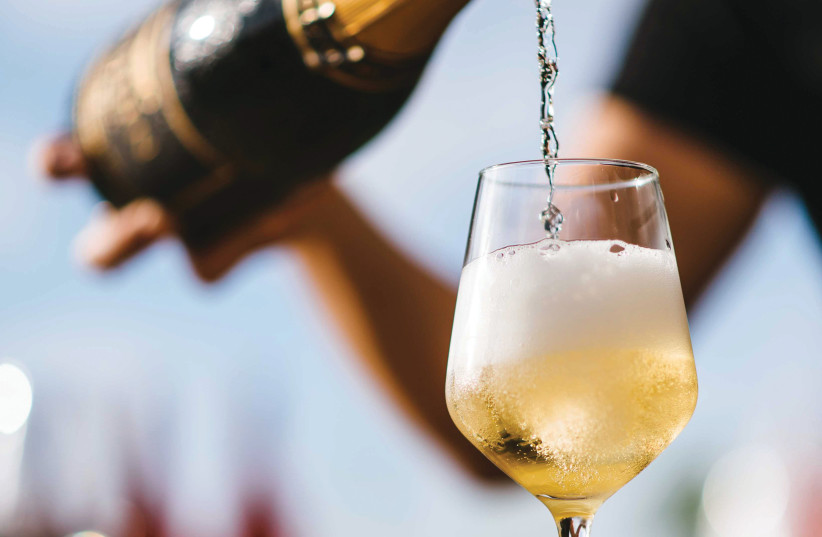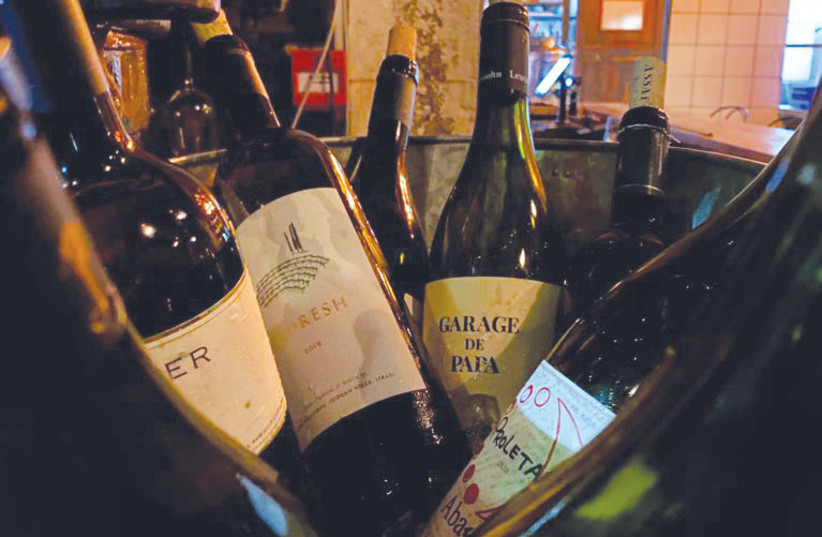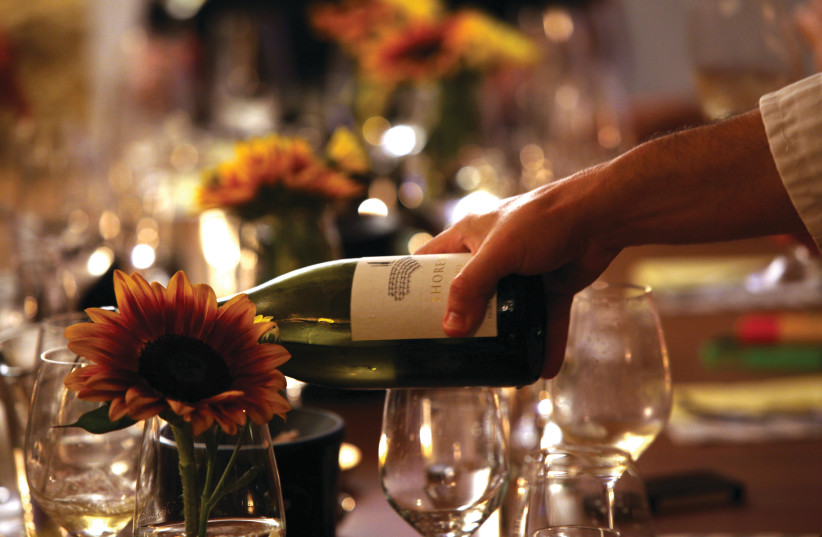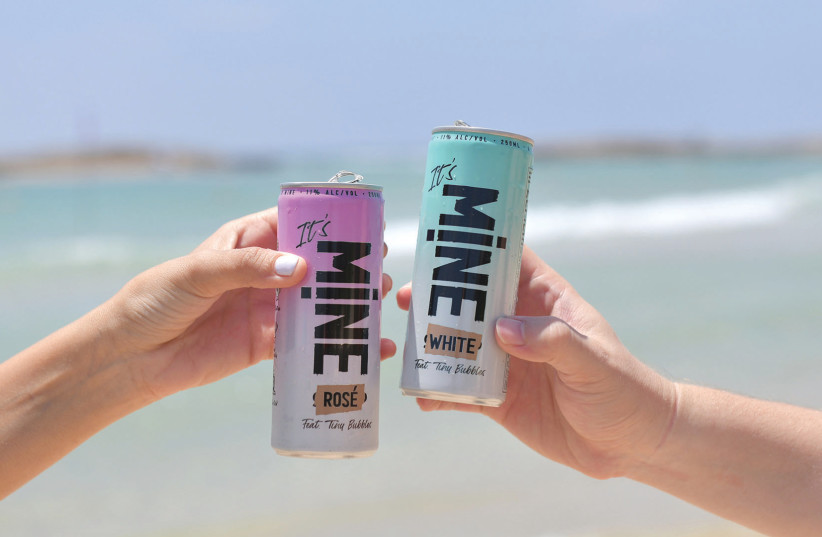It is getting hotter, but you don’t need me to tell you that. Remember that Israel may be the southernmost quality winemaking country in the northern hemisphere. That may be cause for concern in the future, however. When I asked one of our leading winemakers about this a few years ago, he answered me with head-in-the-sand complacency.
“Well, we have made wine for 5,000 years, why would we not continue?”
I am not sure panicking helps, but the irregular weather extremes in wine regions around the world, often with tragic consequences, have belatedly woken up the wine industry. Out-of-control wildfires, fast-moving floods, drought, and out-of-season frost and hail have all bedeviled wine regions as far apart as Australia, California, Italy, Greece, and Germany.
How have irregular and extreme weather changed wine?
Some of the events caused distressing tragedies; but by now, last year’s calamity has been replaced with the current year’s disasters and unseasonal weather patterns.
These days, there is no discussion about wine or wineries that doesn’t begin with comparing notes about the weather. All this talk has even had an effect here in Israel. Today, there is barely a winery that does not brandish sustainability, at least on its label and in its marketing blurb. This is an absolute turnaround.
Vineyards which used to be as clean as a whistle, with brown stripes of earth between the vines that stood like upright soldiers, now have a cover crop, making them look more natural, if less manicured.
What that means for the grape varieties we plant and the winemaking, we will leave for another time. However, in these baking humid summer months and approaching hot autumn, it is pertinent to ask how the rising mercury affects our own drinking habits.
Above all is the question of temperature – the wine’s temperature. It is most important that the wine, at least the white wine and the rosé, be very cold. If necessary, place it in the freezer – but don’t forget that it’s there! You could end up with mush in the bottle and a pushed-out cork.
If you are using a domestic fridge, you really need to keep a white, rosé, or sparkling wine in it for four hours.
Otherwise, the quickest way to chill wine is to put it in a bucket (talking domestic bucket here), add ice and enough water to submerge the bottle, and then add a sprinkle of salt.
In a restaurant situation, the more formal ice bucket is used, but the same principle applies. Restaurants frequently add ice and submerge part of the bottle, but that is not enough. Ask them to fill the water up to the level of the bottle neck and add a touch of salt. The water envelops the bottle, the ice chills the water, and the salt makes the ice melt, which cools the water more speedily. Most restaurants will ram the bottle into the ice, forgetting that the addition of water is crucial.
In these days of emergency temperatures, emergency solutions are required. If you want to add a couple of ice cubes to your glass, do so. After all, I presume you are not drinking Chateau Lafite.
The wine intelligentsia in Tel Aviv may not like it, and the sommelier may balk at the very idea, but the customer is always right. Don’t be put off if some young wine waiter, who has just learned about wine, looks at you as though you have come down from the trees. It may be worth asking for ice just to see their face. Anyway, by my reckoning it is fine. I give you permission, not that you need it from me!
The common refrain is that people usually serve white wines too cold and red wines too warm – and there is something to that. However, I am serving whites and rosés even colder during the hot spell – ice cold, in fact.
Red wines are a bigger problem in the scheme of things. I recently went for a tasting at one of our largest wineries and unbelievably, the red wines were served warm. Good quality wines were simply not given the opportunity to display themselves. It showed a surprising lack of professionalism, with temperatures outside at 35°C.
I recommend placing all red wines in Israel – even your best prestige cuvée – into the fridge for at least 20 minutes before drinking. This will not make the wine cold but will mildly chill it, which is so important in a hot climate. Wines warm up quickly in the glass, so without the chilling, the wine simply loses its shape. If the red wines are young and fruity, then serve them well chilled in these days of exaggerated temperatures. These are wines to quaff. No need to worry about effete tasting etiquette. Sometimes wine is simply for drinking and enjoyment – not for pontification.
One benefit of thirst-quenching wines is the price. If you are looking for wines to quaff, glug, and drink with gusto, you are likely not that interested in nuances of complexity and layers of flavors. Refreshment is what you seek. Therefore, one of the benefits of the search for wines to cope with the weather is that you can buy cheaper. Quality is not the order of the day.
The best wines when your thirst beckons have to be sparkling wines. This category means different things to different people: Whether traditional method wines such as Prosecco, Cava, or Lambrusco, or a Pet-Nat or a fine Champagne.
I am personally a great fan of quality sparkling wines, and Gamla Brut is always a best buy. Sparkling wines are popular these days, as is anything with bubbles. Especially if the wine has good acidity and a mild CO2 bite. There is nothing as refreshing as fizz.
As far as the choice of wines in a heat wave is concerned, I am more likely to drink white than red. Whites are coming back, in any case.
People realize that there is more variety in white wines which match our Israeli-Levantine fusion cuisine and also suit our climate. When it is unbearably hot, I don’t look for body, flavor, complexity, or oak. I want something medium-to-light-bodied, with good fruit and piercing acidity.
So in the blazing humidity, I am not on the lookout for full-bodied oaky Chardonnays. These days, many Chardonnays are made according to a modern method, more on the fresh apple side than the traditional rich buttery aroma. In any case, I prefer a Sauvignon Blanc, a Pinot Gris, or a Riesling, even if it is off-dry. Furthermore, I am not looking for the best quality wine but the most refreshing. These do not necessarily have to be the same thing.
My main summer recommendations are Mony Colombard – a simple variety that is suitable for Israel; Barkan Classic Sauvignon Blanc – which has good typicity at a great price; Mount Tabor Chardonnay – an unoaked modern style Chard; and Jerusalem Vineyard Winery SLB, which I have written about a few times and is very good at its price. The Barkan Beta Riesling is a refreshing wine, even though it is an off-dry.
Rosé is booming all over the world, including in its spiritual homeland, France. In Israel, even the wine intelligentsia, who would not have been caught dead drinking something as mundane as rosé 10 years ago, are now happy to be seen in the pink.
Although the rosé world is large and the variety far greater than we realize, part of the attractiveness of rosé is that it is an unpretentious mood wine. It is not a wine that requires discussion of points or quality. Between you and me, it does not really matter what the grape variety is. It is a wine to drink and enjoy – it is as simple as that. Its informality and casual nature, in my view, perfectly represents the relaxed attitude of Israelis.
Rosé wines tend not to be too aromatic and usually have very good acidity. This makes them great wines to drink in the furnace, but you must serve them very cold. I particularly like the new Galil Rosé from Galil Mountain Winery. It has a beautiful label and is made from Syrah, Sangiovese, and Grenache. The Psagot PR Rosé and Darom by Yatir Rosé are both good, and the Jerusalem Vineyard Winery Rosé is deliciously simple and unpretentious. The Golan Rosé also has everything I like in a rosé. The beautiful color, the merest hint of berry fruit, and that great acidity provide a great contrast.
Then we get to reds. In hot weather, I drink less red – and different reds. I tend to like lighter, more linear reds, with good fruit and refreshing acidity. Grape varieties like Grenache, Tempranillo, and Cinsault make good “summer” or “lunchtime” wines. However, these wines may be found in most varieties. Some Shiraz or Mediterranean blends fit the bill.
Although Cabernets and Merlots can be too much, with upfront fruit and too big for comfortable quaffing, many wineries make unoaked, entry-level expressions of these varieties. Look for wines of lighter body and lower alcohol, without any apparent oak aging (or the lesser influence of large or used barrels).
You will find these among the less expensive winery labels. Some of the wines that the snob within will not allow you to drink in normal times are the ideal wines to drink in hot weather. So often some imperious so-called wine expert has pontificated: “I don’t drink wines under 50 shekels.” Well, the sweltering heat may be the time to start because many of the summer reds will be in that price category.
Reds that spark my interest are the Selected Cabernet of Carmel and Zion Winery Estate Merlot. Serve them both well chilled. 1848 Winery’s 2nd Generation Syrah is juicy fruity and flavorful. Barkan Beta Argaman has cherry berry fruit, and Argaman is the Israeli grape variety. Tura Limited Edition, a blend of Marselan and the Italian Dolcetto, is a light but edgy summer red; Segal Free Run Merlot is flavorful; and Recanati Young Vines Carignan is made from the new vineyard planted in the Judean Foothills, next to old vine vineyard where they produce their classic wild Carignan.
Red berry fruit with good, raw acidity makes for a super refreshing wine. Finally, Carmel Mediterranean 4 Vats is a juicy, chewy, Mediterranean blend that is fresh, vibrant, and good value.
And furthermore, where is it written that thou shalt only drink wine poured out of a bottle? In these times, it is more sensible to put a couple of wine cans in a cooler and head to the beach. What you drink and how you drink it does not have to be defined by tradition.
Temperature, price, and wine style are the issues that should concern you when you drink wine to assuage your thirst. 2023 may be the year of the lowest temperatures in the next 10 years, so be prepared and choose your wines wisely.
The writer is a wine industry insider turned wine writer, who has advanced Israeli wines for 35 years. He is referred to as the English voice of Israeli wine. adammontefiore.com

